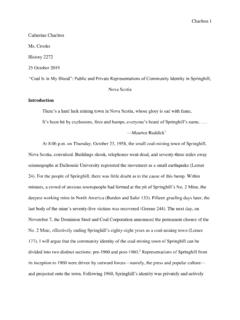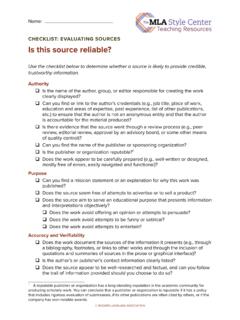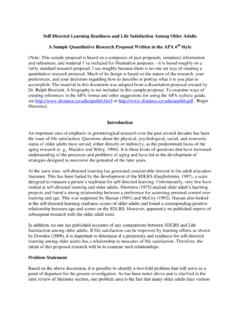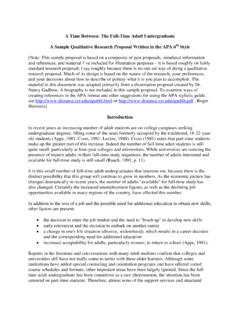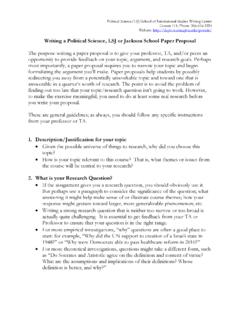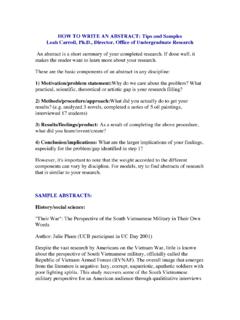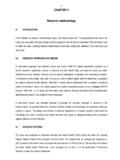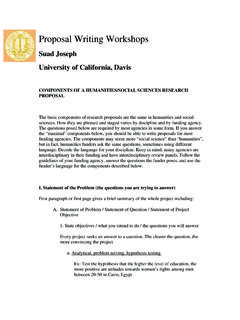Transcription of Michael De Souza - MLA Handbook
1 De Souza 1 Michael De Souza Professor Miller African American Studies 202 15 May 2016 Economic Determinism and Ambition in the Migration Series by Jacob Lawrence The Migration series by Jacob Lawrence is a sequence of sixty paintings (with captions) portraying the mass movement of African Americans from the rural South to cities in the North and West during the beginning of the twentieth century. The artist was the child of African American migrants, and he grew up during the 1930s in Harlem, where he took art classes. In planning the series, Lawrence did a lot of library research on the history and causes of the migration. Reading the series from beginning to end, the viewer can see that he puts the fruits of his learning into the scenes and captions. This paper explores how the series represents the causes of the Great Migration.
2 I argue that Lawrence shows several economic factors, such as difficult farming conditions in the South and greater job opportunities in the North, as providing the basis for the mass movement, but I also think that he shows hope and ambition as playing an important role. First it might be helpful to discuss what historians say about the causes of the Great Migration. Often they describe economic factors labeled push and pull, as explained in an encyclopedia article: The pull of labor shortages in northern industry De Souza 2 and the lack of white male labor combined with the push of the devastation of the cotton crops so many blacks labored on by flood and boll weevils to create conditions for migration (Adams 504). This is to say that migrants were pushed out of the South and also pulled to the North and West by economic factors.
3 The article goes on to explain these factors more specifically. Migrants were influenced to migrate by labor agents, who were paid to visit southern towns to recruit workers for northern industry; by The Chicago Defender, a newspaper that was widely circulated throughout the South and encouraged migration; and by kin networks, which sent word of opportunity in the North and helped migrants make the journey and get settled. But it is perhaps insulting to describe migrants only in terms of being pushed and pulled, since this description makes them look desperate and incapable of acting for themselves. A historian named James Grossman disagrees with limiting description to push and pull factors. Discussing the views of American society during the migration, he says, Public values rested upon the assumption that blacks were by nature docile, dependent, and unambitious (38).
4 But then he questions this view, saying that the Great Migration represented a refusal by one-half million black southerners to cooperate with southern leaders (38-39). While it seems clear that economic factors played an important role in the migration, we can see that African Americans refused to sit still and instead acted on their ambitions for a better life. As I mentioned, Lawrence was the child of migrants and grew up in Harlem. He De Souza 3 had never visited the South when he completed the Migration series in 1941, but he was surrounded by migrants and heard their stories throughout his childhood (Turner, Introduction). Lawrence s mother raised him and his brother and sister alone (she separated from Lawrence s father when he was only seven years old [Phillips 161]).
5 Like many in Harlem during the Depression years, the family was poor. Despite poverty, Lawrence found strength from the community of African Americans. Lawrence spoke of the Harlem community, rather than a specific individual, as the inspiration for his early artistic ambition: I was inspired by teachers, by librarians everybody in the community, I guess, was a role model, really. I didn t have a special person that I thought of I didn t think in those terms. It was the community that was my role model (Interview). Though economic and social problems pushed and pulled migrants from the South to Harlem, African Americans also found themselves set apart by racial and economic divisions from the rest of New York City. In saying that the community was his role model, Lawrence emphasizes that group ambition on behalf of its members is inspirational.
6 This message is central to the Migration series. We should not forget that the Migration series made a big impact when it was first exhibited in 1941. It was part of the first major exhibit of African American art in a downtown New York gallery (Phillips 162). Part of his series was published in Fortune magazine, and Lawrence sold the series in halves to two major museums before it went on a national tour (163). Why was it so popular? One art historian writes, The series De Souza 4 appealed broadly to critics and viewers alike because it embodied American ideals about individual good fortune (Patton 156). That is, individual panels showed hopeful actions by different African Americans. But it is interesting to notice that the series is different from previous ones he painted, like Frederick Douglass and Harriet Tubman, which focused on a hero or heroine.
7 Patricia Hills points this out, and she states that the people as a whole acting with a collective will take on a heroic dimension beyond distinctions of class or gender in the Migration series (146). There is possibly a tension between these two views. Lawrence s series draws out some opposing terms defining African American life, such as rural/urban, North/South, and individual/society. If we examine one opposition, individual/society, we can see how the series works as a story connecting different paintings. I think the beginning of the series helps us see how the opposition individual/society shapes the story (Turner, Jacob Lawrence, panels 1-4). The first panel shows a crowd of African Americans in a train station; gates list destinations as Chicago, New York, and Saint Louis.
8 The next panel portrays a white man operating machinery, and the caption explains that there was a labor shortage in the North. The third panel shows a group of African Americans carrying luggage and walking together. The fourth panel shows a black man pounding a spike with a hammer, and its caption says that African Americans were the remaining source of labor after all others had been exhausted. So we can see a pattern: African American group, white individual, De Souza 5 African American group, black individual (Hills also talks about this pattern [148]). Although the pattern does not stay exactly this way throughout the series, the back-and-forth between depictions of individuals and groups is pretty common. My point is similar to this one in a scholarly article: The narrative.
9 Is not linear, but alternates between the insistent portrayal of the dominant event in the plot the actual physical displacement of the people and paintings dealing with the main causes of this mass migration (Tribe 405). This quotation brings us back to the issue of causes, which I think is related to the opposition individual/society. When Lawrence depicts the causes pushing African Americans out of the South (like lynching, child labor, injustice, and discrimination), he usually shows us only one person or a small group, like a family. Some of the causes pulling migrants away from the South (labor agents, letters from kin) also are shown having their effect on individuals or small groups. But when he shows us scenes of actual migration, he paints groups walking, in train stations, or on trains.
10 So we can see how the opposition individual/society shapes the way he tells his story. There is evidence that the relationship between individual and society is important to the development of Lawrence s style. Henry Louis Gates, Jr., an important scholar of African American culture, emphasizes the role of the individual in two artistic movements: Lawrence s Migration series is an attempt to resolve the two central competing De Souza 6 modes of representation in the African American tradition that clashed and struggled for dominance in the 1920s and 1930s: a naturalism that sought to reveal how individual choice was always shaped and curtailed by environmental forces and a modernism that sought to chart the relation of the individual will to the chaotic environment.
